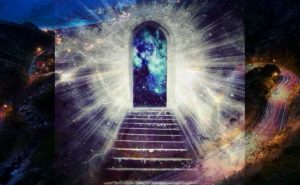Scientific Studies Suggest Life After Death is Possible

 Scientific studies have long been the preferred method for exploring the unknown, and the possibility of life after death is no exception. While the idea of an afterlife has been a topic of discussion for centuries, it is only in recent years that scientists have begun to explore this concept in a more systematic way.
Scientific studies have long been the preferred method for exploring the unknown, and the possibility of life after death is no exception. While the idea of an afterlife has been a topic of discussion for centuries, it is only in recent years that scientists have begun to explore this concept in a more systematic way.
One of the most prominent researchers in this field is Dr. Sam Parnia, director of the Critical Care and Resuscitation Research Program at NYU Langone Health in New York City.
In 2014, Dr. Parnia conducted a groundbreaking study known as AWARE (AWAreness during REsuscitation), which aimed to investigate the possibility of consciousness continuing after death.
During the study, Dr. Parnia and his team monitored cardiac arrest patients in hospitals across the world, looking for signs of conscious awareness during the period when the patients’ hearts had stopped beating.
The results were surprising: of the 2,060 patients studied, 39% reported some form of awareness during the period when they were clinically dead.
While the study did not prove definitively that consciousness can continue after death, it did suggest that the possibility is worth exploring further. Dr. Parnia believes that the study’s findings indicate that consciousness may not be a product of the brain, but rather a fundamental aspect of the universe itself.
Other researchers have also explored the concept of life after death from different angles. Dr. Eben Alexander, a neurosurgeon who experienced a near-death experience himself, wrote a book called “Proof of Heaven” in which he describes his journey into the afterlife.
In the book, Dr. Alexander argues that his experience proves that consciousness can exist beyond the physical body.
Similarly, Dr. Robert Lanza, a stem cell researcher and theoretical physicist, offers a unique perspective on the topic in his book “Biocentrism”.
According to Dr. Lanza, consciousness is not a product of the brain, but rather a fundamental aspect of the universe itself. He argues that our understanding of the world around us is limited by our perception of time and space, and that consciousness may exist beyond these constraints.
Of course, these theories and experiences are still subject to debate and skepticism. Many scientists argue that the evidence for life after death is inconclusive, and that more research is needed to explore the topic further.
Still, the idea of life after death has captured the imagination of many people across the world, and continues to be a topic of discussion and debate.
Whether or not consciousness can continue after death remains a mystery, but the research conducted by scientists like Dr. Parnia, Dr. Alexander, and Dr. Lanza offers a fascinating glimpse into the possibility that our existence may transcend this physical realm.
In the end, the debate over life after death is not likely to be resolved anytime soon. But as we continue to explore this topic, it is clear that the search for answers will continue, and that the human fascination with the unknown will continue to drive scientific exploration for generations to come.
References: Parnia, S., et al. (2014). AWARE—AWAreness during REsuscitation—A prospective study. Resuscitation, 85(12), 1799-1805.; Alexander, E. (2014). Proof of Heaven: A Neurosurgeon’s Journey into the Afterlife. Simon and Schuster.; Lanza, R. (2010). Biocentrism: How Life and Consciousness are the Keys to Understanding the True Nature of the Universe. BenBella Books.
Hey explorer! Every article you read on Anomalien is made possible thanks to the generous donations of our supporters. If you want to help us continue our work, we invite you to make a donation. Make 👽 happy!Follow us on Instagram, Twitter and Telegram for interesting and mysterious bonus content!




